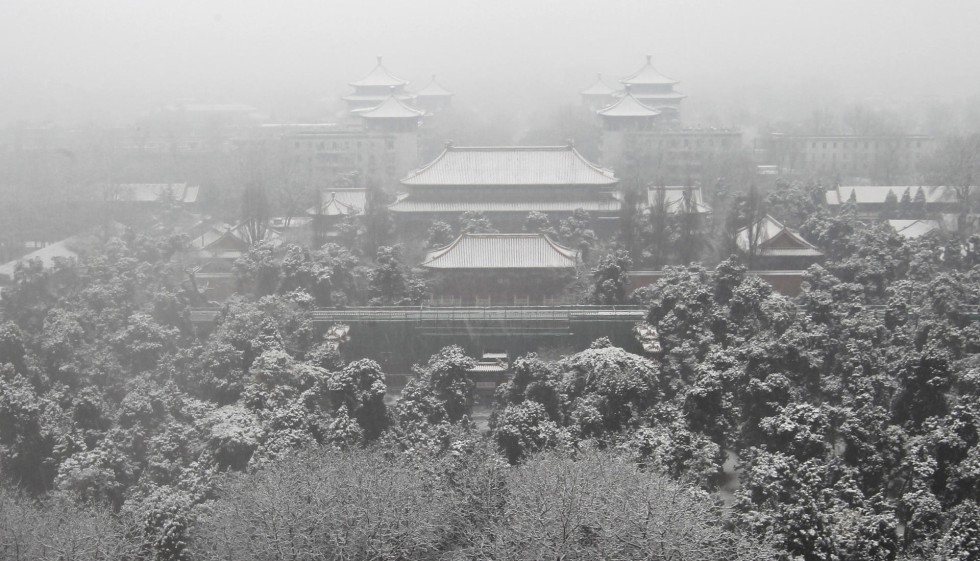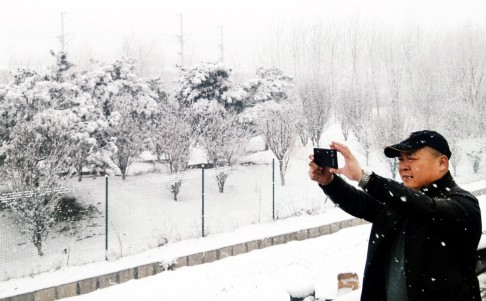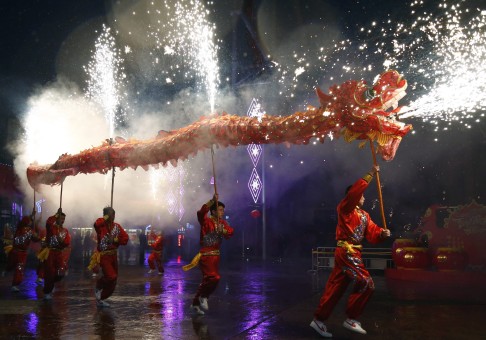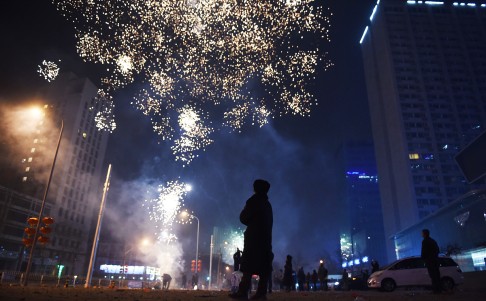Beijing welcomes auspicious snowfall amid heavy pollution over Lunar New Year
The light snow shower – believed to signify a fruitful year ahead – is expected to last until Saturday morning
PUBLISHED : Friday, 20 February, 2015, 1:40pm
UPDATED : Saturday, 21 February, 2015, 1:44am
[email protected]

A light snow blankets the capital. Photo: Simon Song
Beijing's first snowfall this winter came on the auspicious first day of the Lunar New Year on Thursday afternoon, but it failed to fully disperse air pollution.
Beijingers cheered the scattered flurries which were forecast to continue until this morning. The city's meteorological centre issued an alert for icy conditions yesterday afternoon. In traditional Chinese belief, a timely snowfall signifies a fruitful year ahead.
But the light dusting failed to help clear the heavy pollution caused by Wednesday night's massive fireworks display.
Winds were expected tonight, the meteorological centre said, which should help disperse some of the smog. Visibility in some areas yesterday was less than 500 metres as a result of snow, fog and air pollution. Some highways on the city's outskirts were closed, traffic authorities said.

A Chinese passer-by snaps away at the welcome shower of light snow in Beijing on the first day of the Lunar New Year. Photo: Xinhua
Beijing's air quality deteriorated rapidly as the clock struck midnight on Wednesday, the eve of Lunar New Year, as residents set off fireworks, despite the municipal government's advice to limit the their use due to the "extremely unsuitable" weather conditions.
As a result, the capital's air quality index rose from around 50 to 456 - or severely polluted levels - within a few hours, with average PM2.5 levels hitting 413 micrograms per cubic metre - more than five times the national safe standard - at about 1am.

A troupe performs the dragon dance amid festive fireworks as the clock struck midnight on the eve of Lunar New Year. Fireworks displays caused air quality to deteriorate rapidly in cities throughout China, including Beijing. Photo: EPA
Concentrations of PM2.5 - those particles most harmful to human health - in Beijing's northeastern Pinggu district reached 1,000 micrograms per cubic metre due to fireworks displays around midnight, the highest across the city.
Nationwide, fireworks displays also caused "heavily polluted" air in nearly half of 338 cities after midnight on Wednesday, the Ministry of Environmental Protection said.
Xinhua reported that although urban residents had bought fewer fireworks in recent years, sales continued to rise in rural areas, which had seen significant smog problems around the festive period.

A security guard watches as fireworks explode over a street in Beijing early on February 19, 2015. Photo: AFP
"Some migrant workers returning to their hometown for the festival want to show off that they have made good money in the past year," Xinhua quoted a fireworks dealer in Guangxi as saying.
"Sometimes they'd compete with each other on the amount and scale of firework displays."
